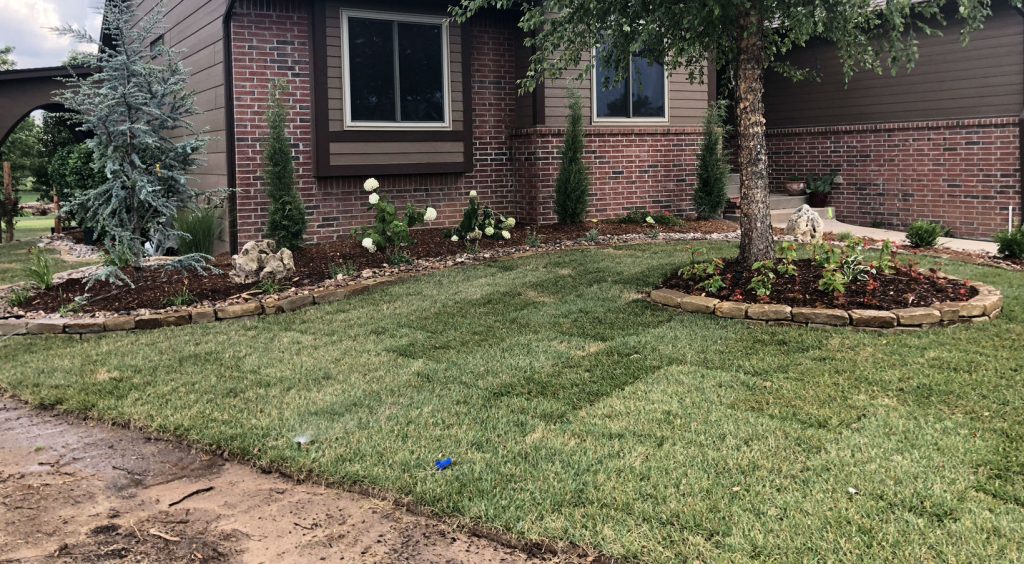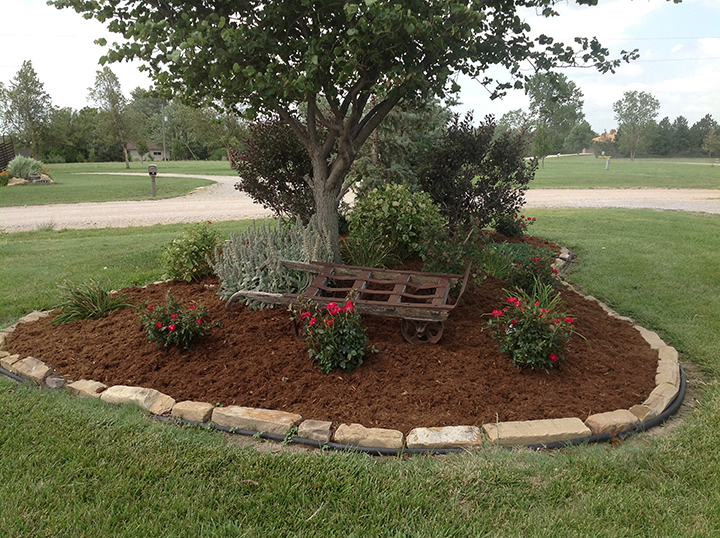Use a simple plant palette with fewer, hardier plants. Select 10–15 plants to use in large masses and repeat them throughout the yard. Repeating the same types of plants in several plant beds simplifies the maintenance with the same care requirements. Group plants with the same water needs, and use drip irrigation when possible to reduce water use throughout the garden.
Slightly crowd plants together in the plant beds. Conventional planting techniques recommend spacing plants so they barely touch only at their mature size. For low maintenance, install plants so that they touch a little sooner but don’t overlap too much. Most plants will not reach the high end of the height and spread growth range unless they are growing in optimal conditions.
 Fit the plant to the space. Use slow-growing, small plants in small areas and large, faster-growing plants in large areas. Consider the shape of the plant and the shape of the space. The more compatible the shape, the less time will be needed to trim the plant to fit the space.
Fit the plant to the space. Use slow-growing, small plants in small areas and large, faster-growing plants in large areas. Consider the shape of the plant and the shape of the space. The more compatible the shape, the less time will be needed to trim the plant to fit the space.
Use small trees or large shrubs to provide shade. Small trees shed fewer leaves, and large shrubs can be limbed up to provide shade for plants on the ground. Both provide a canopy that fills space and adds interest with height. Select trees with small foliage. Tiny leaves that fall off the trees will be hidden in the plant material and mulch below and will not require raking. Trees should also be placed to provide shade to air conditioning units and windows for energy efficiency.
Move or remove unhealthy plants. Observe plants and watch for signs that they are not doing well. Some sick plants are in the wrong location, and the adverse growing conditions are contributing to the poor performance. Relocate to a more suitable location, if possible, or remove plants rather than waste time and money trying to keep the plant healthy.



